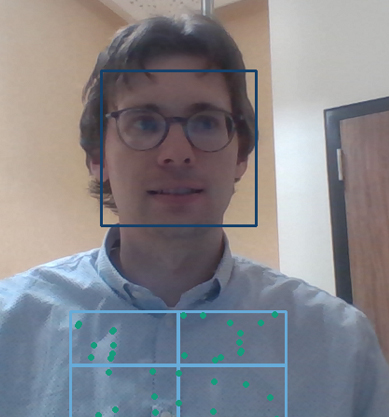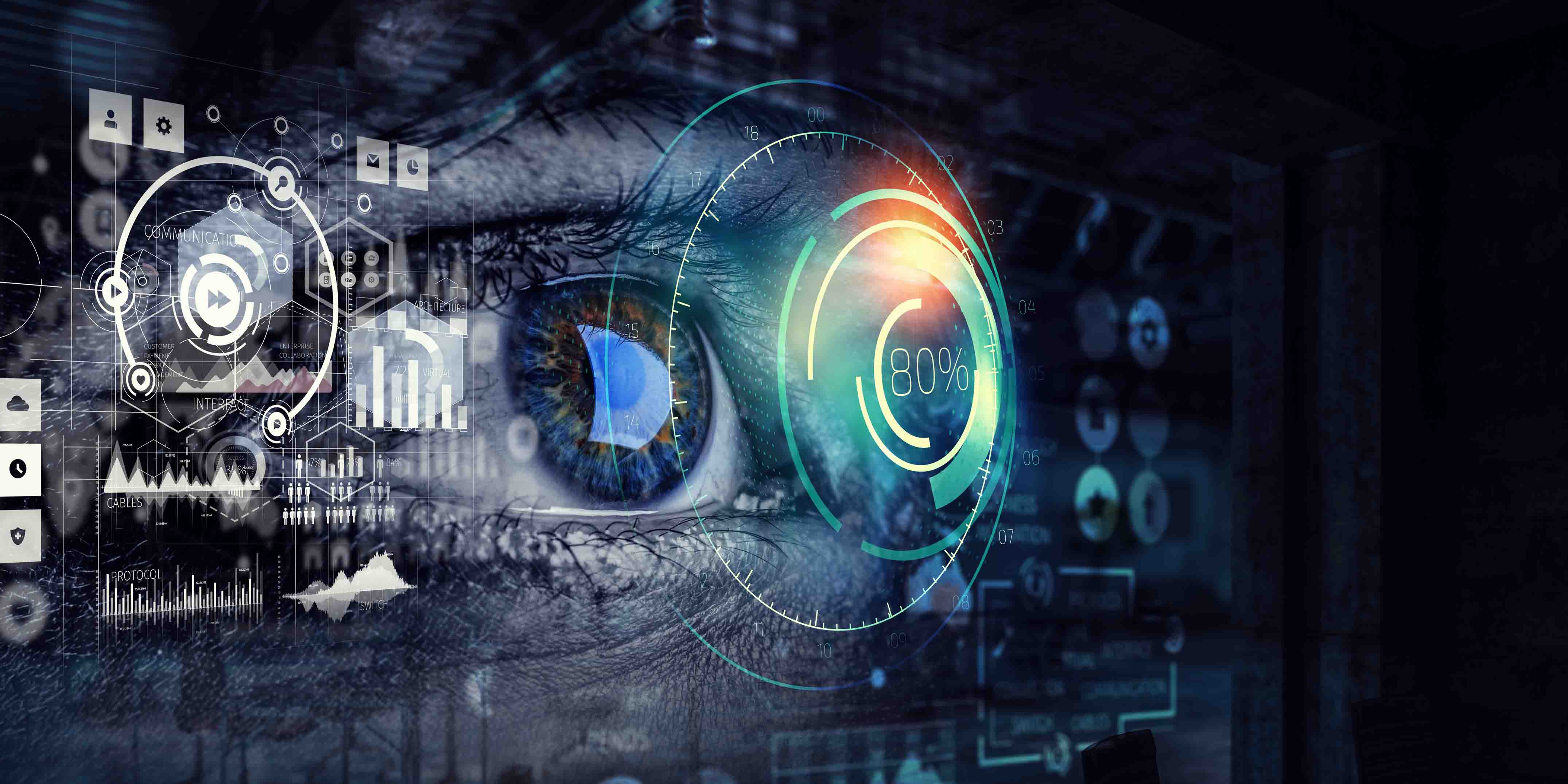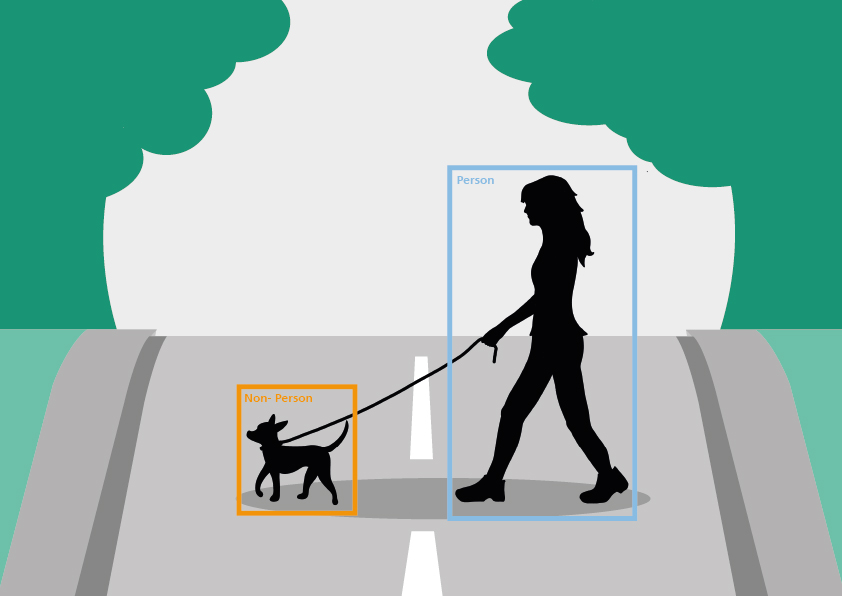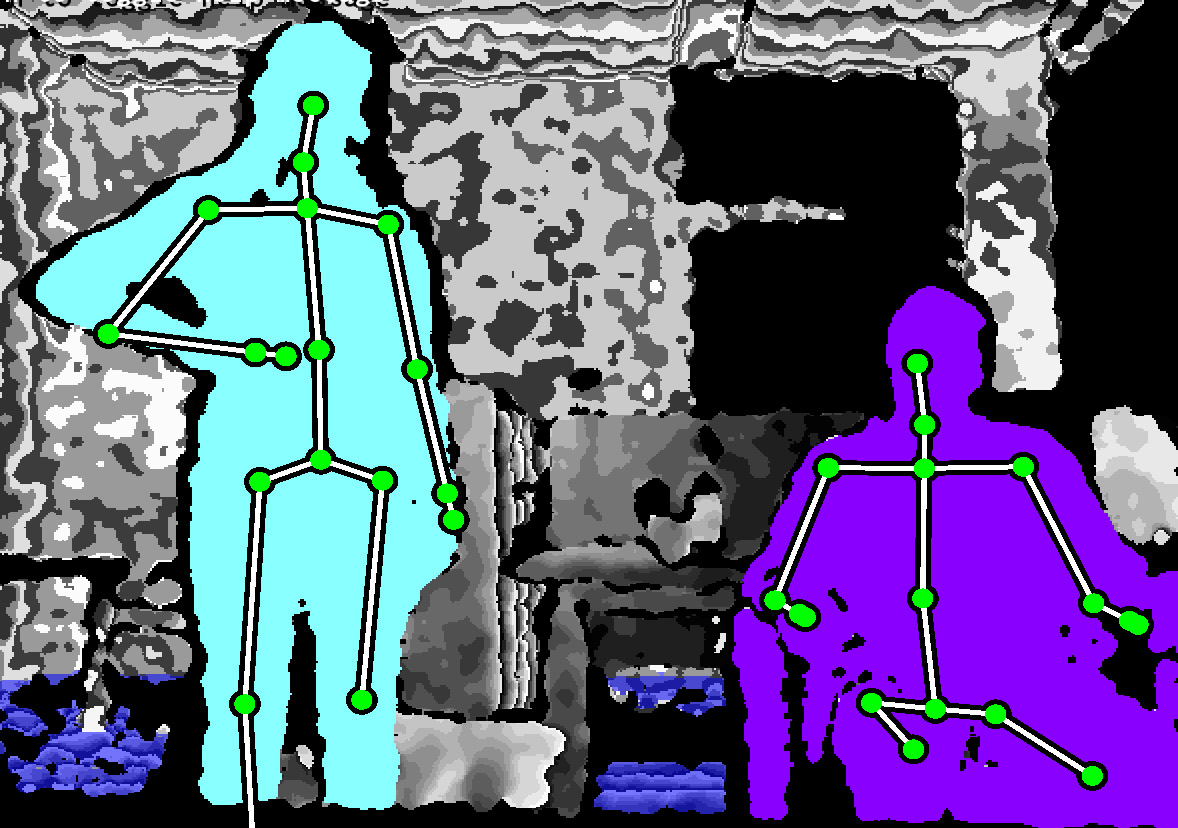Computer vision describes the ability of machines to see the world as we humans do and to extract information from images. Particularly in the field of driver assistance systems great progress has been made in recent years. Fraunhofer IMS itself develops a variety of imaging sensors (e.g. CMOS image sensors, infrared camera chips (IRFPA) or single photon avalanche diodes (SPAD), e.g. for LiDAR applications), all of which require adapted image processing methodologies. The goal is to extract the maximum of available information in the most resource-efficient way. In particular modern machine learning methods are used for this purpose. The application areas range from ultra-fast person recognition and sophisticated motion analysis to the quantification of vital parameters.
Computer Vision
Person Recognition
The recognition of persons in images is one of the oldest applications in computer vision and supposedly solved. This is undoubtedly true for high-performance computing systems. But can an accurate person recognition be realized on small microcontrollers? Fraunhofer IMS is developing methods to realize the entire image processing chain for real-time person recognition locally on edge devices.
Motion analysis
Beyond just recognizing people Fraunhofer IMS is researching methods to analyze the movement of people in videos. Computer vision is used to localize individual body parts and joints and examine their course over time. This allows conclusions to be drawn about movement anomalies. Fields of application of this research are in the analysis of causes of falls to prevent them and in the daily energy management of patients suffering from the Chronic Fatigue Syndrome (CFS).

Quantification of health parameters
Another field of research in the field of computer vision is the contactless optical determination of vital parameters. Compared to contact-based methods, they enable a gentle, comfortable and continuous measurement of vital parameters such as heart rate, respiration rate or blood pressure. The measurement is realized in different wavelength ranges. Especially in the current use case of rapid evaluation of possible symptoms of infectious diseases such as COVID-19, Fraunhofer IMS is able to quickly provide aid and solutions.


